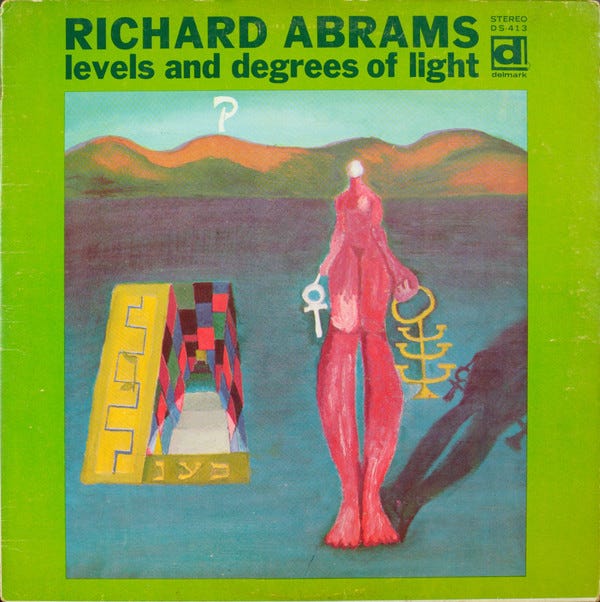R.I.P. BOB KOESTER (Delmark Records, Jazz Record Mart)
INTRODUCTION: I have this curmudgeonly policy of never doing an R.I.P. post when someone awesome and/or important to the world of Blastitude passes away. I may have listened to their records a hundred times, and read dozens of interviews with them, but I almost never knew them personally, and with the rate that our elders are leaving us, I feel like it’s either start a new magazine/newsletter called R.I.P. that is all obituaries and remembrances, or just ignore it all completely and focus on those “Heartbeat Props,” right? (Speaking of which, R.I.P. Shock G.) I’ve chosen the latter, BUT, Bob Koester is a person whose decades of work as a record store proprieter and especially record label proprieter has meant a lot to me, and whom I had talked to in person before. And, literally the morning of the day he passed away (yesterday, May 13th, 2021), I was finishing up this review in which I was talking myself into going to his store and asking him a specific question about a record I love that he had produced and released on his label. I think the lesson here is, talk to your elders and give them a chance to pass on their wisdom and knowledge and history while they’re still here. Not that Bob didn’t already pass on tons of knowledge, or live a long and full and important life. [Chicago Sun-Times obit here and Chicago Tribune obit here.]
MUHAL RICHARD ABRAMS Levels and Degress of Light LP (DELMARK) Honestly might be in the running for my favorite album ever, not joking. Not only is it one of the great experimental and avant-garde jazz albums from my adopted hometown of Chicago, but simply one of the great experimental and avant-garde jazz albums of all time. I first heard it when I was still a Nebraskan, via the 1991 CD reissue, and it absolutely knocked me sideways. Made a cassette dub of my friend’s copy and listened to it tons of times that decade. At some point I found it on vinyl (can’t for the life of me remember where, which is strange, but I don’t remember it being expensive, which it sure is now), and was somewhat shocked to hear the same material, but presented in a much different mix than the CD, marked by a LOT of reverb. In fact, a poem performed by David Moore in the middle of side two “The Bird Song” is so washed out in reverb on the LP mix, I can’t even really pick out the passages that haunted me so clearly on the CD mix, for example: “Golden doves through the windows of high-rise ruins, in the auburn fog from fission, century 21. Century 21 and the clocks of Rome stand mute. Hallelujah, sparrows of yellow.” Other than during the poem, I actually love the reverb, because it makes the record sound like what it is: a tripped-out underground masterpiece from that halcyon year 1968. I now see in George Lewis’s mega-crucial book A Power Stronger Than Itself that Delmark label proprieter Bob Koester called the reverb “a little bit corny” (p. 150), which is interesting and makes me think that he, and not Abrams, oversaw the mix on this CD reissue. (I should drive right down to Bob’s Blues & Jazz Mart in Old Irving Park tomorrow and ask him. I bet he’ll be there, 88 years young as of this writing, still manning the place by himself, still open 10:30am to 6:30pm six days a week.) Or who knows, maybe Muhal agreed in ‘91 and wanted all the reverb off too. The track order also changed for the CD, with the epic “Bird Song” now second, instead of being forced to side two because of its length. Was that Koester’s idea too, or Muhal’s? (I really am going to go to the store and ask him — as almost anyone who’s shopped there knows, he will most likely be forthcoming with both facts and opinions! Check back, as I’ll be sure to update this review with any learnings. I personally think they should’ve used the LP mix for everything but the poem. Dial out the reverb when Mr. Moore starts reciting, then dial it right back up again when he’s done.) Have I mentioned that this was the recording debut of both Anthony Braxton and Leroy Jenkins? Jenkins is so amazing on “The Bird Song,” combining his strange string music with the brilliant arco bass played by late legend Charles Clark to create a true rain-forest aviary in real-time. Hard to even determine what other instruments are in there… bells, for sure… huge intermittent cymbal washes by Thurman Barker… electronics (or at least electronically treated field recordings of bird sounds). Regardless, this is total mystery music. All hail Chicago creative music, all hail Muhal Richard Abrams, all hail the AACM.



